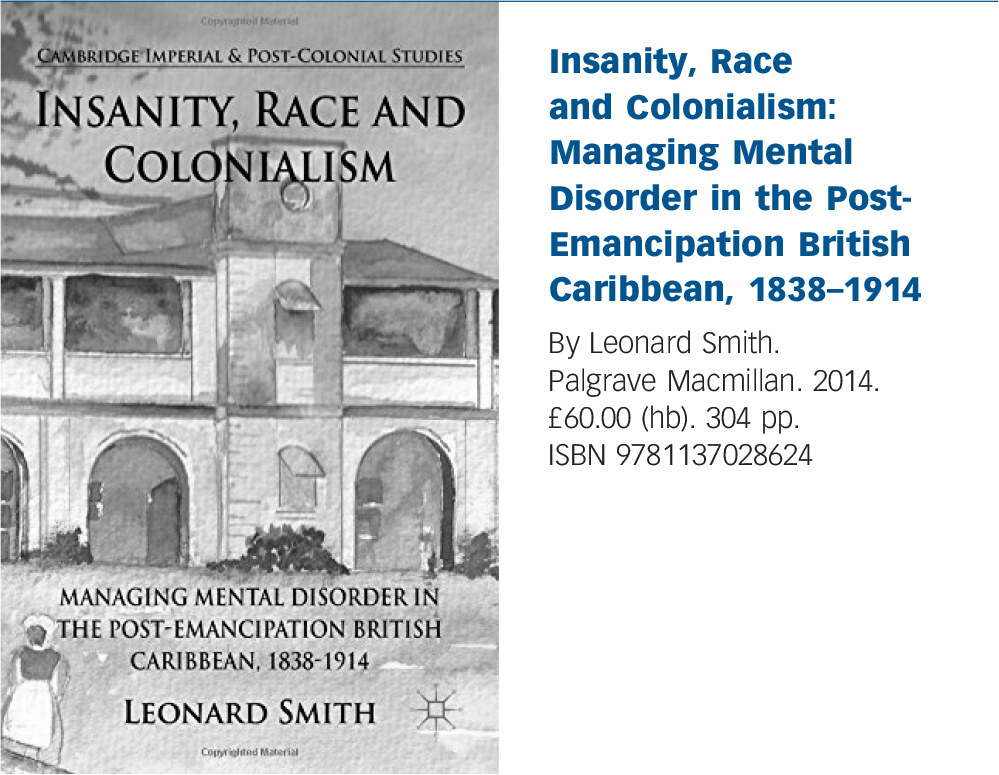
This is explicitly an institutional study and so perhaps it misses out on some of the intellectual excitement we associate with Fisher (Colonial Madness: Mental Health in the Barbadian Social Order), André (L’Inceste Focal dans La Famille Noire Antillaise) or with Mahone and Vaughan (ed. Psychiatry and Empire). Its theoretical stance, briefly stated, is that the organisation and conditions in British Caribbean asylums after Emancipation in 1838 tended to follow those of the colonies themselves – declining economic significance, half-hearted colonial benevolence and benign neglect. Smith argues that the British mental health model, based on the asylum with watered down moral management emphasising non-restraint and organised occupation, was transported to the Empire, initially to the White settler communities and then, in the mid-19th century, to the Caribbean. There people with mental illness had previously been lodged in the prisons, and the early mental hospitals were often established in disused barracks where attendant problems of inadequate sewage (leading to cholera and dysentery) and physical restraint continued: metropolitan money went to the planters in compensation for the loss of their slaves rather than for local social and educational improvements.
In 1858, just before Jamaica’s Morant Bay Rebellion, a scandal at the Kingston Lunatic Asylum reached the Colonial Office and the Commissioners in Lunacy in London. It involved partiality, violence (‘tanking’ – similar to waterboarding) and the nondischarge of patients, who remained economically useful. Smith offers poignant patient testimonies submitted to the subsequent inquiry. Reforms were enacted, particularly a laundry, bakery and a fishery with vegetable planting, a monthly magazine, sports days, dances and cricket, but complaints continued of over-crowding, understaffing and violence between patients and even periodic return to the use of restraint.
The patients admitted were predominantly from the ‘labouring classes’ (a non-racial euphemism for the darker skinned population) and indentured immigrants from India or from other West Indian islands. Alcohol and cannabis were blamed as immediate precipitating factors, along with a poor physical condition, but also religious revivalism: Smith discusses the famous case of Alexander Bedward, a pastor who said he would ascend into heaven and was then arrested for sedition and sent to the asylum. Admission depended on such court orders or on certificates signed by a doctor and a magistrate, usually after violence or arson or the public stripping off of clothes. There is little extant information on physical treatment except citation of potassium bromide or chloral hydrate.
Explicit racism appears absent, concealed beneath a stuttering benevolence, indifference and random abuse. There is no evidence that local psychiatry contributed to a more informed debate on racial psychiatry as happened with the British African psychiatrists of the 1940s and 1950s. The Caribbean remained an imperial backwater: prejudice and neglect undoubtedly, but hardly practicable ideologies for racial or cultural inferiority.



eLetters
No eLetters have been published for this article.